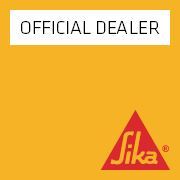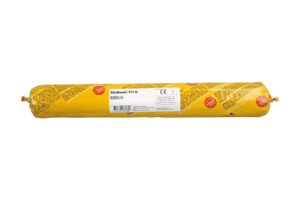What is EPDM?
EPDM or ethylene propylene diene monomer is the synthetic elastomer found in EPDM sheets. Through the polymerisation of ethylene, propylene and diene EPDM rubber is created, complete with specific set of qualities such as heat, steam, chemical, UV and ozone resistance.
Like many conventional elastomers, EPDM exhibits traits such as high tensile strength, tear resistance and a low compression set. However, what truly sets EPDM apart from other alternatives is its capacity to resist degradation caused by weathering agents, while also providing unrivalled elasticity.
The properties of EPDM materials make it the ideal weather resistant rubber, a trait which many industry professionals, in areas such as automotive and roofing to name a few, make use of when creating high performance, durable components suitable to withstand outdoors conditions.
Since it was first discovered as part of the 20th century surge of synthetic innovations, EPDM rubber sheets have become a building block of the world’s economy. EPDM sheets` popularity is the result of manufacturers realising that they needed a type of rubber which could be used outdoors for long stretches of time without decomposing as a result of UV exposure in the way natural rubber tends to.
Unlike elastomers such as natural rubber, SBR and NBR, which tend to react unfavourably to weather conditions by hardening, cracking and discolouration, the resistance to outside forces the EPDM material displays deem it almost immune to weather conditions.
What are the properties of EPDM?
The most commonly emphasised value of EPDM materials is their exceptional resistance to oxidation, heat, ozone and weather damage. As an extension of that, if the EPDM sheets are properly pigmented, their colour will remain stable over time.
What’s more, there is a wide temperature flexibility across different EPDM sheets grades – the rubber can withstand temperatures as low as minus 60 °C and as high as 160°C depending on the compounds involved.
EPDM-based compounds have also proven to be quite economical, since they respond well to high plasticiser and filler loading. Depending on the compound contents, the sheets’ materials can exhibit fantastic oil swell and abrasion resistance, improved flame retardance, and high tensile and tear properties.
What are the applications of EPDM rubber sheeting?
Thanks to its diverse properties, EPDM sheets are widely used in a number of general and specialist applications. Due to the fact that the design and performance of polymers like EPDM are incredibly versatile, and it can be processed to meet a number of different requirements, the material is broadly used across a range of applications.
EPDM’s varied dynamic and static applications include roofing membranes, electrical insulators, radiators, cold-room doors, garden and appliance hoses, as well as other outdoor appliances. The areas where EPDM rubber sheets are most commonly used are the commercial roofing and automotive industry.
Using EPDM sheeting material in your project doesn’t require an in-depth understanding of its chemical properties. The good news is most EPDM rubber sheets have the same functionality as a flexible, weather resistant rubber. Available in a broad variety of widths, thicknesses and colours (black and white being the most popular), EPDM sheets are widely used in roofing buildings across the globe.
There’s substantial evidence to show that on average EPDM sheets have the longest service life when it comes to construction materials. Highly resistant to wind damage, they come extremely handy for roofing systems which are often exposed to this force of nature.
What are the benefits of using EPDM rubber sheeting in a commercial roofing project?
There are a number of reasons why EPDM rubber sheets are so popular in the construction industry. They have a variety of applications in contemporary construction thanks to EPDM`s ease of handling, durability and environmental resistance. So what are the particular benefits of using EPDM rubber sheeting for a commercial roofing project?
For one thing, EPDM sheeting material is incredibly workable, making both installation and repair very easy compared to alternatives. In fact, EPDM is so cheap and easy to repair, the roofing reparation job could be done by homeowners themselves!
EPDM sheets` resistance to weather are also a huge benefit in commercial construction, as using them means the internal structure of the property will remain protected from moisture and damp. In addition to being waterproof, the EPDM sheeting material is also non-perishable due to its resistance to outside forces.
These high levels of resistance across the board also contribute to the incredible durability and longevity EPDM sheets are known for. Having a roof made of this material means repairs and replacements would rarely be an issue, giving you peace of mind about the upkeep of your commercial property.
What’s more, since EPDM rubber sheets insulate heat, they can serve to both keep a building cool during summer and prevent heat from escaping in winter, thus reducing the cost incurred by losing heat. You can also buy EPDM sheets for cheaper than silicone without compromising on its key properties.
In addition to being cost-efficient, EPDM is also very environmentally friendly. Not only are EPDM rubber roofs made from recycled material, but the longevity of the roofing type means it’s not replaced as frequently as other roof materials.


